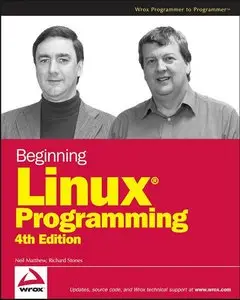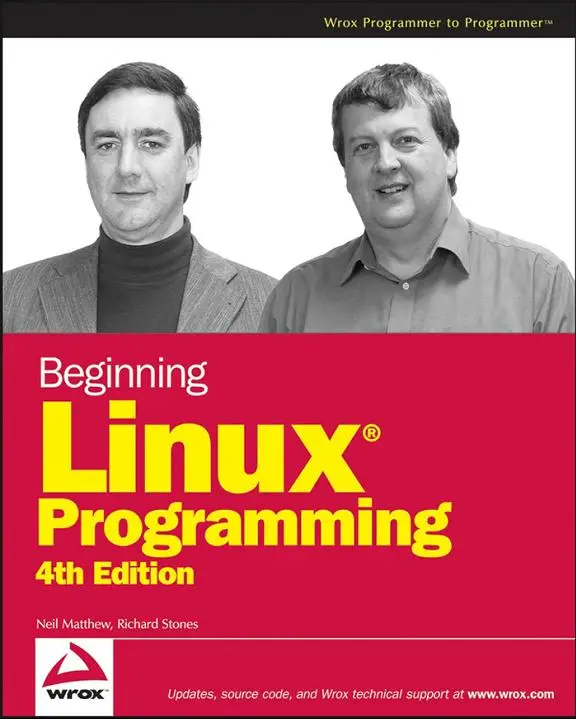Beginning Linux Programming, Fourth Edition
Wrox | November 5, 2007 | ISBN: 0470147628 | 816 pages | PDF | 7 MB
Beginning Linux Programming, Fourth Edition continues its unique approach to teaching UNIX programming in a simple and structured way on the Linux platform. Through the use of detailed and realistic examples, students learn by doing, and are able to move from being a Linux beginner to creating custom applications in Linux. The book introduces fundamental concepts beginning with the basics of writing Unix programs in C, and including material on basic system calls, file I/O, interprocess communication (for getting programs to work together), and shell programming. Parallel to this, the book introduces the toolkits and libraries for working with user interfaces, from simpler terminal mode applications to X and GTK+ for graphical user interfaces. Advanced topics are covered in detail such as processes, pipes, semaphores, socket programming, using MySQL, writing applications for the GNOME or the KDE desktop, writing device drivers, POSIX Threads, and kernel programming for the latest Linux Kernel.
Download
Rapidshare
Hotfile
:::::::::::::::::::::::::: ...::::::::::::::::::::::::::
No mirrors please
PM me if link are dead
Rapidshare
Hotfile
:::::::::::::::::::::::::: ...::::::::::::::::::::::::::
No mirrors please
PM me if link are dead



